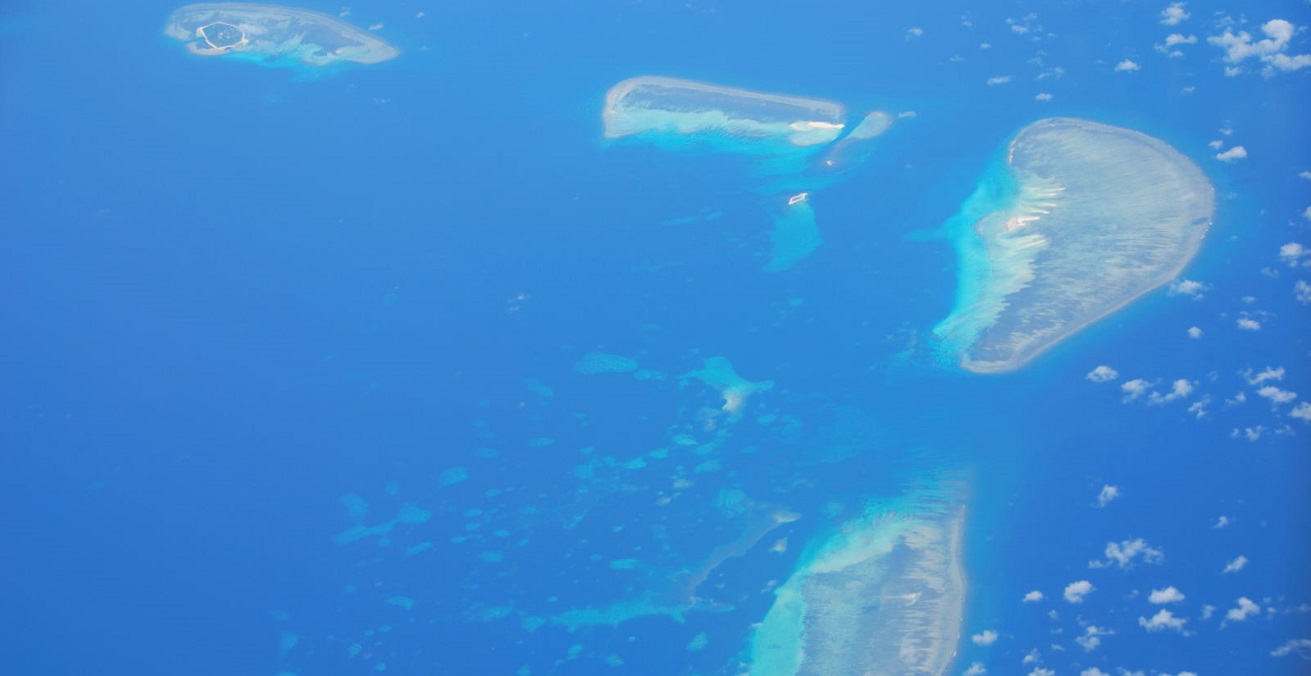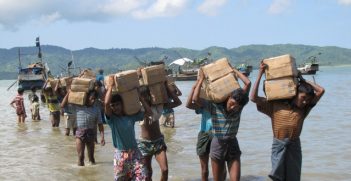Does America’s Brave Talk Support Vietnam on the Paracels?

A collision between a Vietnamese fishing boat and a Chinese coast guard patrol boat near the Paracel Islands, which resulted in sinking of the former, has added yet another incident to the history of the South China Sea disputes. A usual blaming of the other happened, like in many international maritime incidents.
The United States has cautiously sided with Vietnam. The US State Department issued a statement on April 6 denouncing China over the incident. Some think tanks in Washington were quick to praise the statement as a show of strong US support for Vietnam. However, a more careful reading shows implied continuity of the US strategy in the South China Sea to stay above the sovereignty question between China and Vietnam over the Paracels.
The first line of the statement, “We are seriously concerned by reports of the PRC’s sinking of a Vietnamese fishing vessel in the vicinity of the Paracel Islands in the South China Sea,” implies that the Chinese patrol boat was at fault for the sinking, but cautiously attributes US concerns to “reports.” The statement then generalises Chinese activities by listing “a long string of PRC actions to assert unlawful maritime claims and disadvantage its Southeast Asian neighbors in the South China Sea” including “new ‘research stations’ on military bases…on Fiery Cross Reef and Subi Reef,” landing of “special military aircraft on Fiery Cross Reef,” and the continued deployment of “maritime militia around the Spratly Islands.” Chinese illegality on the recent collision is not elaborated in specifics in order to avoid the sovereignty question.
A similar collision incident occurred in September 2010 between a Chinese fishing boat and two Japanese Coast Guard patrol boats within the territorial water of the Senkaku Islands in the East China Sea. The US stopped short of taking a side on the question of sovereignty over the islands. Instead, it reiterated its recognition of the current administrative control of the islands by Japan and, for the first time, explicitly announced that the bilateral security treaty with Japan applies to the Senkaku Islands. The US has never committed itself to any country’s claim in the South China Sea disputes to the degree it displayed with Japan.
The US bilateral security treaty with the Philippines explicitly excluded all disputed maritime features (islands, rocks, low-tide elevations, and banks) of the South China Sea from the subjects of US defence obligation. The international tribunal ruling in July 2016 on the Philippines’ legal submission ruled China’s Nine-Dash Line claim groundless and all land features in the Spratly Group of islands incapable of generating an exclusive economic zone (EEZ) claim. The US adopted the ruling as basis of its approach to rule-based order in the South China Sea.
The Paracel Islands are disputed between Vietnam and China. China has declared a straight-line baseline around the Paracels, which expands its EEZ-generating ability in a manner inconsistent with the Law of the Sea. China has taken a more constraining interpretation of the Law of the Sea about permissive military activities within another country’s EEZ, in opposition to the liberal US interpretation. US has challenged China’s expansive baseline claim, without challenging its sovereignty claim over the islands per se. The statement walks a fine line by accusing China for the collision and denouncing China’s “unlawful” actions in the South China Sea in general, but not tying the two matters together. The statement thus sidesteps the question of sovereignty over the Paracels.
The US Department of Defence followed with its own statement on April 9, calling on “all parties to refrain from actions that would destabilize the region.” In disguise of being a general statement of condemnation against China, the statement implicitly warns Vietnam against using fishing boats to challenge China’s growing control of the adjacent water of the Paracels.
While America’s commitment to Vietnam is with reservations, Vietnam’s relationship with China has not corresponded with the downward spiraling of the US-China relations. As Asia now faces a second wave of coronavirus contagion back from Europe and the United States, China has offered medical assistance packages to Southeast Asian countries including Vietnam. Vietnam has reciprocated medical gifts to China. Vietnam’s own pandemic diplomacy to assist neighbouring Laos and Cambodia, and even European countries, did not constitute a zero-sum competition vis-à-vis China. For Vietnam, this was an act of soft balancing of China for influence in its neighbourhood and exploring diversified partnerships with additional Western partners.
The two US statements offer no new legal implication. The noises think tanks generate around the statements, however, have political roles to play. The US wants to enhance its defence against China by exploiting new access opportunities in the frontline states in Asia without additional defence commitments other than the existing key alliances. Vietnam wants to roll back the growing Chinese control over the Paracels with enhanced US backing (but without officially saying so). Washington think tanks push the envelope on Vietnam’s behalf.
Officials and trained experts understand this lobbying game in Washington and assume they are merely trying to stabilise the status quo. However, oversimplified and biased reporting lights dangerous nationalism in both Vietnam and China. China finds a convenient partial use in the US statements, fanning nationalism and diverting domestic attention from the coronavirus resurgence and economic downturn by focusing on US accusations against China while ignoring the implicit US neutrality on the sovereignty question and warning against Vietnam. The dangerous game, which could spin out of the elites’ control, must stop.
Yoichiro Sato is a professor at Ritsumeikan Asia Pacific University. His recent books include Regional Institutions, Geopolitics and Economics in the Asia Pacific (Routledge, 2017) and Re-Rising Japan (Peter Lang, 2017).
This article is published under a Creative Commons Licence and may be republished with attribution.





